Bakong's male guardians
It's only right that as the girls who adorn the walls of the brick towers at Bakong (in the Roluos Group) have had their stint in the spotlight, now it's the turn of the boys, or the male guardian dvarapala to be precise. There are eight brick towers and I'm not sure why some have devata and others the male figures shown here. They are similar in that they are sculpted from the base brickwork and would've been enhanced by lime mortar (stucco) back when they were fashioned in the 9th century. Much of that has now disappeared, though these males still adopt a dominant and forceful pose, especially as they are the guardians of the temple and their stance would dissuade wrongdoers from entering the holy shrine. Hands on their hips and carrying a spear or long club, these guys mean business.
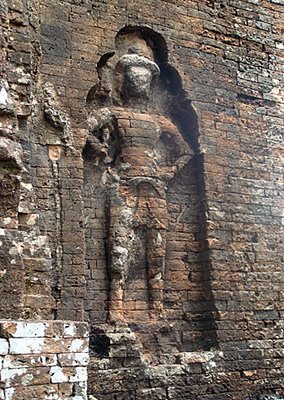 The brickwork with this dvarapala has darkened over the centuries, though he still retains his immense strength
The brickwork with this dvarapala has darkened over the centuries, though he still retains his immense strength
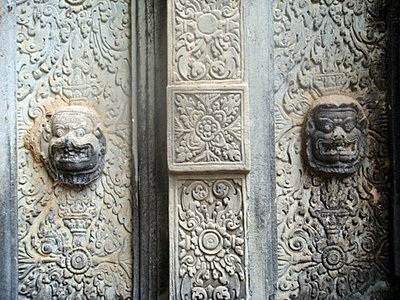 A gorgeously carved false door to a brick shrine at Bakong with two fierce lion-monster faces on either door panel just to deter wrongdoers
A gorgeously carved false door to a brick shrine at Bakong with two fierce lion-monster faces on either door panel just to deter wrongdoers
 The brickwork with this dvarapala has darkened over the centuries, though he still retains his immense strength
The brickwork with this dvarapala has darkened over the centuries, though he still retains his immense strength A gorgeously carved false door to a brick shrine at Bakong with two fierce lion-monster faces on either door panel just to deter wrongdoers
A gorgeously carved false door to a brick shrine at Bakong with two fierce lion-monster faces on either door panel just to deter wrongdoersLabels: Bakong, Roluos Group
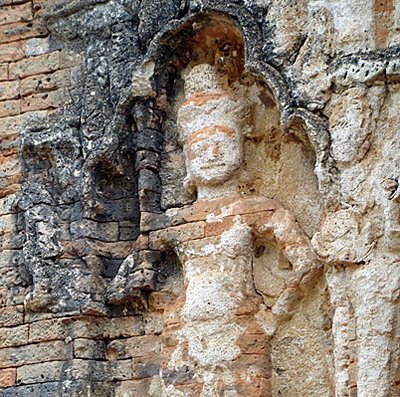
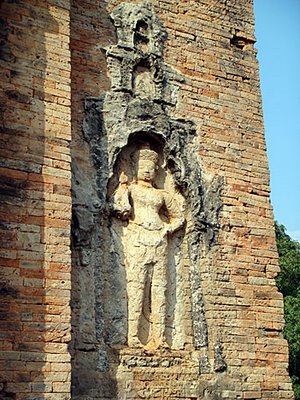
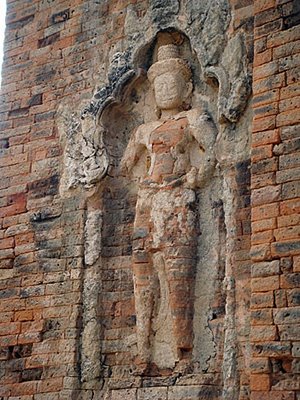
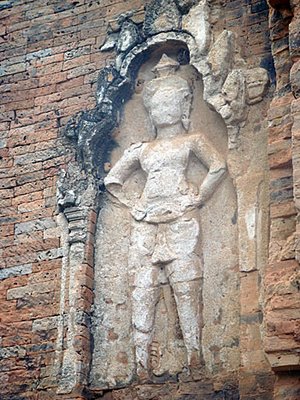
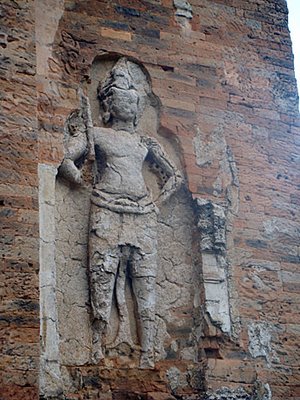


2 Comments:
Excellent! I wanted to go see this myself, but at the time my Khmer, although the inflection is similar to Thai, sounded so bad that when combined with my deep voice only rendered a finger pointing to the west: Bangkok.
OB
The carvings are highly reminiscent of Javanese designs.
The Khmer were Javanese vassals.
Javanese architects supervised the construction of Angkor Wat and Thom- which duplicates almost exactly the stupa of Prambanan temple in Yogyakarta.
I suspect the corridors and civic buildings were Khmer indigenous design.
Cambodia has very strong Javanese links or even roots- such as names in Javanese- Kampong? (not Malay- Malaysian is a bastardised traders' langauge originating in Batavia- and Malaysia is an artificial nation created by British multi-nationals to retain rubber, tin and oil resources).
Even in modern period- Cambodia showed its' respect to perhaps Father Indonesia by being the first to offer lavish state gifts for Indonesia's first president Sukarno.
I have heard that Sultan Hamengkubawana of Yogyakarta are related to the Siranud royalty.
Here is an imgae of very simarly Javanese teak carving- and probably a good indication of what the render and colour the original Khmer masterpiece had:
http://sheptonsantiques.com/images/IG1051-2.jpg
The colours are also significant to Hindu-Buddhists- but I forget their meaning
Jayavarman II was vassal hostage to Javanese Sailendran of king Samaratungga, witnessing the construction of Borobudur.
Samaratungga appointed Jayavarman II was appointed as the governor of Indrapura in the Mekong delta. Jayavarman later revoked his allegiance to the Sailedras and Srivijaya to form the Khmer Empire.
Java then sent an expedition which sacked the Khmers.
Post a Comment
<< Home